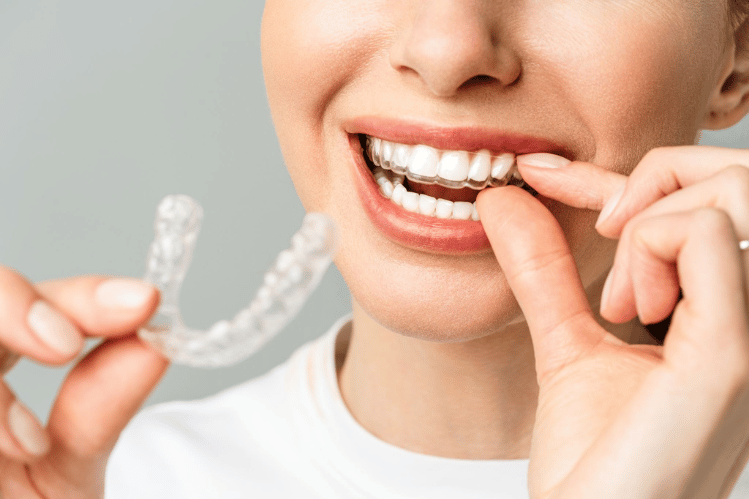Legacy Orthodontics for Dummies
Legacy Orthodontics for Dummies
Blog Article
The Basic Principles Of Legacy Orthodontics
Table of ContentsGet This Report on Legacy OrthodonticsFacts About Legacy Orthodontics UncoveredRumored Buzz on Legacy OrthodonticsTop Guidelines Of Legacy OrthodonticsOur Legacy Orthodontics Statements
In enhancement, we use adjustable therapy routines, flexible payment choices and a fun, enjoyable experience.An orthodontist is a dental practitioner educated to identify, avoid, and treat teeth and jaw irregularities. They remedy existing problems and are trained to determine troubles that might establish in the future. Orthodontists collaborate with people of every ages, from children to grownups. Individuals often associate a best smile with health.
Malocclusion, or misaligned teeth, can bring about oral problems, including tooth decay, gum tissue disease, and tough or painful eating. But not everybody is birthed with straight teeth. If you have a negative bite or big spaces between your teeth, you might intend to get in touch with a dental professional focusing on orthodontic care.
Legacy Orthodontics - Questions
( Image Credit Rating: DigitalVision/Getty Images) Orthodontists utilize taken care of and removable oral tools, like braces, retainers, and bands, to change the position of teeth in your mouth. Orthodontic treatment is for dental problems, including: Uneven teethBite problems, like an overbite or an underbiteCrowded teeth or teeth that are also much apartJaw misalignmentThe objective of orthodontic therapy is to enhance your bite.
A healthy bite guarantees you can eat, eat, and talk effectively. While you may consider orthodontists as primarily for kids or young adults who require braces, they can fix oral issues at any age. Orthodontists attend university, dental institution, and orthodontic institution. After college graduation, they spend 2 or 3 years in an orthodontic residency program.
All orthodontists are dentists, however not all dental experts are orthodontists. Orthodontic residency programs use intensive, concentrated instruction for dental specialists. They concentrate on two locations: How to correctly and securely move teeth How to effectively lead advancement in the teeth, jaw, and faceOnce an orthodontist has actually finished training, they have the option to come to be board accredited.
Examine This Report about Legacy Orthodontics
Imbalance, or malocclusion, is one of the most typical factor people see an orthodontist. It is hereditary and is the result of dimension differences between the top and reduced jaw or between the jaw and teeth. Malocclusion brings about tooth congestion, an irregular jaw, or irregular bite patterns. Malocclusion is usually treated with: Your orthodontist attaches metal, ceramic, or plastic square bonds to your teeth.
If you have just minor malocclusion, you may be able to utilize clear braces, called aligners, rather than conventional braces (https://padlet.com/brianmccune20176/legacy-orthodontics-oaq8ob5ieez4famy). Some people need a headgear to help move teeth into line with pressure from outside the mouth. After braces or aligners, you'll need to wear a retainer. A retainer is a custom device that maintains your teeth in area.
They're most usually utilized on children. They can produce added space in the mouth without needing to draw teeth. If you have a serious underbite or overbite, you might require orthognathic surgical procedure (also called orthodontic surgery) to lengthen or reduce your jaw. Orthodontists use wires, surgical screws, or plates to support your jaw bone.
You might need to see an orthodontist if you have: Crowding or not enough area for every one of your teethOverbite, when your top teeth come by your bottom teethUnderbite, when your base teeth are as well much forwardSpacing or problems with gapsCrossbite, which is when your upper teeth fit behind your base teeth when your mouth is closedOpen bite or an upright void between your front bottom and top teethMisplaced midline, when the center of your bottom and upper teeth don't line up Dealing with a dental malocclusion can: Make biting, eating, and talking easierImprove the balance of our face and your general appearanceEase pain from temporomandibular joint conditionsDifferent your teeth and make them less complicated to clean, helping protect against tooth decay or tooth cavities It's often a dental expert who initially notifications misaligned teeth throughout a routine examination.
Some Of Legacy Orthodontics

During your very first orthodontic assessment, you'll likely have: A dental examPhotos taken of your face and smileDental X-raysPanoramic (360 degree) X-rays of your face and headImpressions to develop mold and mildews of your teethThese tests will certainly assist your orthodontist recognize just how to wage your treatment. leesburg orthodontics. An orthodontist is a dental practitioner that's had training to treat your teeth and jaw
Orthodontists might carry out surgical procedure, exams,X-rays,and even more to assist you obtain a much more comfy, much healthier smile. An orthodontist is concentrated on your bite, so something like a damaged tooth would be dealt with by a dental practitioner. Orthodontists are dentists but not all dental professionals are orthodontists. Orthodontists are focused on your bite, or the way your teeth fit together, and the straightness of your teeth.
Ever wondered just how celebs constantly appear to have completely lined up teeth? The solution frequently depends on the proficient hands of an orthodontist. But just what does an orthodontist do? Orthodontists are dental experts who focus on fixing abnormalities in the teeth and jaws. Their experience surpasses simply producing a stunning smile; it extends to improving your overall oral health and function.
Legacy Orthodontics Can Be Fun For Everyone

While dental braces are the most generally recognized orthodontic therapy, orthodontists have a diverse toolkit at their disposal. The specific method selected depends upon the seriousness of the case, the individual's age, and private choices. review These reliable braces use a system of braces adhered to the teeth and connected by cables.
These detachable trays are tailor-made to progressively shift the teeth's position. In instances of slim jaws, palatal expanders can be used to create room for appropriate tooth placement.
Report this page